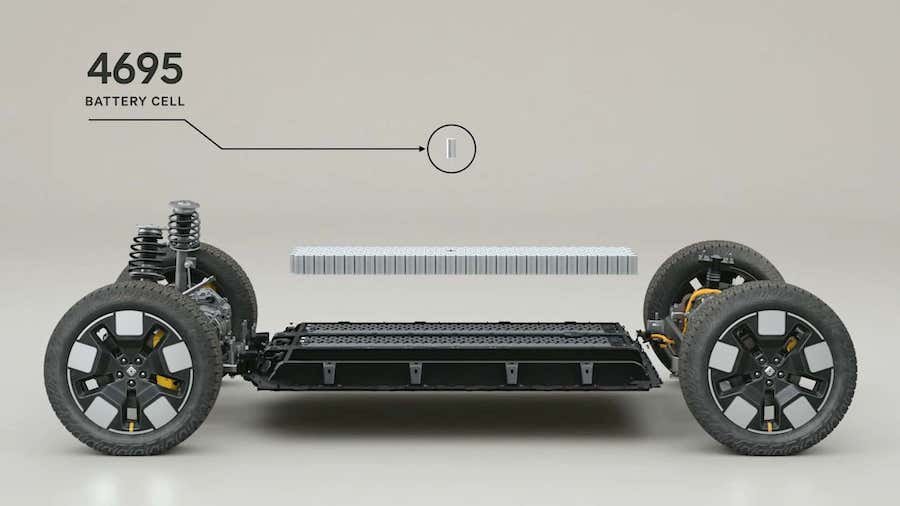Rivian's New Battery Cell Could Be Even Better Than Tesla's

Rivian surprised everyone today by not only revealing the hotly-anticipated R2 SUV at a starting price of just $45,000, but also showing us another car, the R3, as well as a new battery cell that underpins both cars. The cell is called the 4695 due to its diameter of 46 millimeters and height of 95 millimeters. Its specs have yet to be detailed, but it's considerably larger than Tesla's 4680 cells, which could mean a lot.
As battery cells get bigger their voltage does not change unless the chemistry changes, and Rivian is more likely than not using conventional lithium-ion chemistry. What does increase is the cell's rating in amp-hours, which translates into a 4695 holding more energy than a 4680. But there's more.
Larger cells can typically charge and discharge at higher rates. In short, this means the R2 will likely be able to charge faster and offer more peak power than if it got its juice from a slightly slimmer pack made of 4680s. The car's regenerative braking can also be stronger, which may offer efficiency gains.
Rivian is not the first to get into the 4695 game. BMW recently revealed samples of a 4695 cell it plans to use in its Neue Klasse of EVs from 2025 onwards. Indeed, several battery manufacturers are now producing cells in this 46mm form factor, including Samsung SDI, Panasonic, and LG.
We don't know the exact specs of these new 4695 cells, but we can do a little bit of guestimation about the pack's specs based on images Rivian showed us at the reveal.
Zooming in on the pack, it appears to consist of 3 large modules separated by heavy internal frame rails. Each module is 34 cells wide by 8 deep, for a total content of 272 cells. If we're talking lithium-ion and we assume the cells are all wired in series, we get a module voltage of 979.2V (nominal). That's a 1000V architecture, not 800V as speculation might otherwise indicate.
With three of these modules wired in parallel, the voltage will remain the same but the current available will go up considerably. We don't know what the individual cell ratings are, but other 4695s are capable of pulse discharging at up to 10C, or ten times their rated capacity in amp-hours. This could mean available power as high as 900kW, or around 1,200 horsepower. The Rivian's 4695s likely err on the side of capacity, though, so such high discharge rates are unlikely.
Once the electric automaker unveils the total capacity of the pack, that sort of information can be extrapolated. For now, just know that these new battery cells will likely enable performance on par if not greater than what Tesla is capable of in cars like the Model Y. How efficiently the rest of the drivetrain uses this energy is going to matter in terms of real-world performance, but the kilowatt-hours are there for the taking.
Related News
